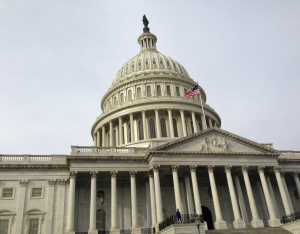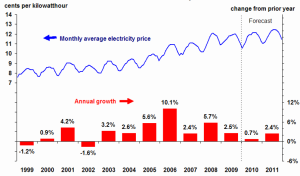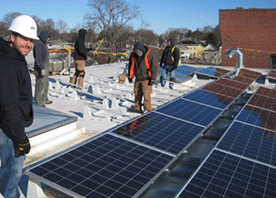Facing ever-fluctuating energy prices, aging electrical grids and increasing concern for the environment, more businesses and facilities are turning to distributed generation as a key component of a successful overall energy strategy.
Who We Are
Facing ever-fluctuating energy prices, aging electrical grids and increasing concern for the environment, more businesses and facilities are turning to distributed generation as a key component of a successful overall energy strategy.
Topics: Energy Efficiency, Energy Managed Services, EVs, Measurement and Verification, Combined Heat & Power, Power Purchase Agreement, Energy Cost, Renewable Energy
Three years ago, as we were developing our own energy efficiency finance program, I was struck by how few people had yet recognized the market opportunity for financing energy-efficient building upgrades through a shared-savings approach. Large ESCO performance contract firms continued to rely solely on their customers using tax-exempt bonds to pay for their projects and solar PPA firms focused, surprise, on solar. Only a handful of us were hustling after this emerging market.
Topics: On Bill Finance, Blog Topics, Power Purchase Agreement
There are two sides to a company’s energy profile – consumption of energy by its facility assets (HVAC, lighting, etc.) and it’s purchase of utility services (electricity, gas, etc.) In practice energy engineering teams (including ours) spend most of their time identifying opportunities for energy efficient equipment upgrades or behavior changes. Purchased utility services are usually taken as a given, with utility bills being studied for historical inflation rates, usage patterns and demand charges.
Topics: Energy Efficiency, Power Purchase Agreement, Behavior Change
With our $2.6 million investment announcement we described that a portion of these proceeds would fund our CESA (Corporate Energy Services Agreement), our PPA for energy efficiency we began delivering in 2009.
Topics: CESA, energy efficiency financing, Shared Savings, Power Purchase Agreement, PPA for Energy Efficiency, PACE, Corporate Energy Services Agreement, performance contract
 Labor Day typically marks the time when our year-end project installation schedule becomes more clear. Our corporate customers, often operating on a fiscal-calendar year for budgeting, also exhibit end-of-year psychology and “get it done by year end” becomes a priority. Normal product lead times, procurement contracts, permits, and even potential interruptions from winter weather means by Labor Day our construction year is pretty much set.
Labor Day typically marks the time when our year-end project installation schedule becomes more clear. Our corporate customers, often operating on a fiscal-calendar year for budgeting, also exhibit end-of-year psychology and “get it done by year end” becomes a priority. Normal product lead times, procurement contracts, permits, and even potential interruptions from winter weather means by Labor Day our construction year is pretty much set.
This year many cleantech project developers have even more tension leading up to their 2011 New Year’s party planning. With Section 1603, the US Federal program for renewable Grants in Lieu of an Investment Tax Credit (ITC), set to expire at the end of 2010, projects which are not at least 5% underway by year end will miss the proverbial party.
Topics: Grant in Lieu of Investment Tax Credit, Solar PV, Power Purchase Agreement, Clean Energy grants, Section 1603, Renewable Energy
 Recently a customer had us model the energy production and financial return for a new 2MW cogen system at their manufacturing site in the United Kingdom.
Recently a customer had us model the energy production and financial return for a new 2MW cogen system at their manufacturing site in the United Kingdom.
Our analysis considered their contract cost for kWh and natural gas, the system’s energy production in kWh and therms, its full installation and annual maintenance cost and their UK tax benefits, including a reduced carbon tax from the UK’s Carbon Reduction Commitment. All in, the capital investment had a simple payback of 2.3 years.
When we built the system’s 10 year PPA model there was one big question – what escalation rate for kWh and gas should we use?
Topics: escalation rate, cost of electricity, PPA, Solar PV, escalator, United Kingdom - carbon tax, energy contracts, Combined Heat & Power, Power Purchase Agreement, Energy Cost
 Today I’m attending and speaking at the SolarTech Conference in San Ramon, CA.
Today I’m attending and speaking at the SolarTech Conference in San Ramon, CA.
The conference format broke the day into working sessions covering all major areas relating to Solar PV: permitting, finance, installation, interconnection, and a new one for the market – energy efficiency (which I’ll come back to later). At the end of the day, the entire audience voted on the key initiatives for each of working session and these rankings become the basis for 2010 SolarTech working agenda. Makes great sense.
Topics: Property Assessed Clean Energy, PPA, Solar PV, energy audit, Power Purchase Agreement, PACE, whole building assessment, Clean Energy grants